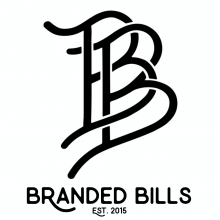1. What is the World Handicap System (WHS) all about?
Golf already has a single set of playing Rules, a single set of equipment Rules and a single set of Rules of Amateur Status overseen by the USGA and The R&A. Now, in 2020, the WHS unifies six different handicap systems used around the world into a single system that:
Enables golfers of different abilities to play and compete on a fair basis, in any format, on any course, anywhere around the world;
Is easy to understand and implement, without sacrificing accuracy; and
Meets the varied needs and expectations of golfers, golf clubs and golf authorities all around the world and is adaptable to suit all golfing cultures.
The WHS encompasses both the Rules of Handicapping and the Course Rating System (formerly the USGA Course Rating and Slope System).
2. What are the benefits of the World Handicap System?
As the world becomes a smaller place with a much greater frequency of international play (as demonstrated by golf returning to the Olympics in 2016), we believe the development of a single handicap system results in easier administration of international events and, potentially, allows National Associations more opportunities to focus attention on golf development and strategic planning to support the game. It also provides the opportunity to evaluate depersonalized golfing data to help monitor the health of the game.
3. Will the World Handicap System impact the way the game is played in the United States?
The cultural diversity that exists within the game, including different formats of play and degrees of competitiveness, is what makes the game so universally popular. Through collaboration with National Associations, the goal has been to try to accommodate those cultural differences within a single WHS.
4. Did you consult with golfers and golf club administrators about the World Handicap System?
Yes. We solicited the opinions of golfers and golf club administrators all around the world via an online survey, to which we received over 52,000 responses. We also conducted focus group sessions in five markets throughout Europe, the USA and South America. The reaction was overwhelmingly positive; for example, 76% surveyed were supportive, 22% undecided and only 2% opposed.
5. What is the timeline for implementation of the World Handicap System?
In the United States, the WHS was implemented in January 2020. Many countries have also adopted the new system, with other countries going live throughout the year to accommodate different implementation plans and variations in their golf seasons.
6. How and when will golfers and golf club administrators be educated on the WHS and Rules of Handicapping?
The education roll-out began in January 2019, and each of the 59 USGA Allied Golf Associations (state and regional golf associations) have attended a comprehensive WHS training seminar. Under the WHS, these Allied Golf Associations, with support from the USGA, are responsible for training clubs and golfers within their jurisdictions.
How will it impact my handicap?
1. My Handicap Index changed under the World Handicap System. Why?
Your Handicap Index in 2020 is based on the modernized Rules of Handicapping and is more responsive to good scores by averaging your eight best scores out of your most recent 20. Under the previous USGA Handicap System, 10 of 20 scores with a .96 multiplier was used. In most cases for golfers in the U.S., your Handicap Index changed less than one stroke. So, if you notice that your Handicap Index is different despite not having played, this is why!
2. Someone asks me what my handicap is when we’re standing on the first tee. What do I tell them?
Start with your Handicap Index! This drives everything. Your Handicap Index forms the basis for your Course and Playing Handicap.
Slope Rating and now Course Rating and par are used to determine your Course Handicap, which represents the number of strokes you’ll need to play to par.
Your Playing Handicap is the actual number of strokes you give or receive for the round being played. It is typically the same number as your Course Handicap. The exception is when a term of the competition applies, such as a handicap allowance used for equity in certain formats of play.
3. I read that there is a new Course Handicap calculation. What does it mean for me?
The new Course Handicap calculation includes the difference between Course Rating and par. This simply means that your Course Handicap now represents the number of strokes needed to play to par for the set of tees being played. As a result, your Course Handicap will vary more from tee to tee than it did in the past.
For you to play to your handicap, your target score for the day will be par plus Course Handicap.
4. I play in a group where we all play from different tees. Do we still have to make a Course Handicap adjustment when we play?
Under the Rules of Handicapping, such an adjustment is only necessary when par is different – which is far less likely!
5. Let’s say I have a Course Handicap of 9 and the 2nd-ranked Stroke Index hole is a par 4. I hit my drive out of bounds and continued to struggle on the hole so I picked up. Will I be able to post a score for handicap purposes?
Whenever the format of play allows, you are encouraged to pick up once you have reached your maximum hole score for handicap purposes – which is a Net Double Bogey.
Net Double Bogey = Double Bogey + any handicap strokes received on a hole.
Using the scenario above, your maximum score for handicap purposes is a 7, so in this case you would post a score of 7 for that hole.
If you were to pick up on a hole before reaching Net Double Bogey, then you would record your Most Likely Score as long as it does not exceed your Net Double Bogey limit.
6. Sometimes I submit a score when the course was playing really tough due to weather conditions or placement of hole locations. I don’t feel that the score I posted is an accurate reflection of how I played. Does the Rules of Handicapping address this?
Yes! Golf is an outdoor game, and sometimes playing conditions (weather or course setup) can cause scores to be abnormally high or low on a given day. For example, a score of 80 on a rainy, windy day or when the course setup is difficult may be more impressive than a 79 on a calm day with normal course conditions.
Under the Rules of Handicapping, a Playing Conditions Calculation will account for this and adjust players’ Score Differentials to better reflect their actual performance. This calculation is driven by scores posted at a golf course on a given day. Any adjustment will be clearly identified in the player’s scoring record for transparency.
7. I normally post my scores for the week on Sunday night to make sure they’re included in the next revision. Can I still do this under the Rules of Handicapping?
Under the Rules of Handicapping, you should post your scores the day you play for two reasons:
1. Daily Revisions – Each time you post a score, that score will be factored into the calculation of your Handicap Index for use the very next day.
2. Playing Conditions Calculation – It uses scores submitted each day to determine any adjustment for abnormal playing conditions.
By posting scores the day you play, you ensure that your Handicap Index will be a responsive and up-to-date indicator of your ability. No excuses anymore, please be sure to post all your scores in a timely fashion!
8. I was only able to play 12 holes before darkness prevented me from playing the rest of the round. Can I still post a score for handicap purposes if I don’t play a full 18-hole round?
In that situation, you would enter hole-by-hole the scores made on holes 1 through 12 and then an 18-hole score differential will be created using your expected score for the holes not played. To submit an 18-hole score, you must play a minimum of 10 holes.
For a nine-hole score to be acceptable, you must play all nine holes. If a player has not played at least 9 holes, the score is not acceptable for handicap purposes.
9. There’s a golfer in my league who always tends to play well during net competitions and wins often. Are there provisions in place to ensure that everyone is playing on a fair level?
Under the Rules of Handicapping, there are several new safeguards to ensure the integrity of a player’s Handicap Index.
A Soft Cap and Hard Cap limit the extreme upward movement of a Handicap Index over a rolling 12-month timeframe, and an Exceptional Score Reduction reduces a player’s Handicap Index each time they post a score that produces a Score Differential at least 7.0 strokes below their Handicap Index.
A club’s Handicap Committee has access to reporting tools that provides additional oversight. Also, the Committee in charge of a Competition can protect the field by modifying a player’s Playing Handicap before or between rounds when appropriate.
10. What if I don’t have a Handicap Index? How can I get one?
We warmly welcome you – and the World Handicap System was designed for you. If you are in the U.S., we recommend you contact the closest USGA Allied Golf Association in your state for next steps. It only takes 54 holes – any combination of 9 and 18-hole scores – to establish a Handicap Index. Whether you play recreationally or competitively, and whether you are an amateur or professional golfer, the WHS was built with you in mind!
11. Who should I contact if I have a question about the Rules of Handicapping or my Handicap Index?
For specific questions regarding your Handicap Index or scoring record, you should contact the Handicap Committee at your Home Club or the Allied Golf Association in your area. A list of the 59 AGAs can be found here.
Quick Links
PARTNERS

















































